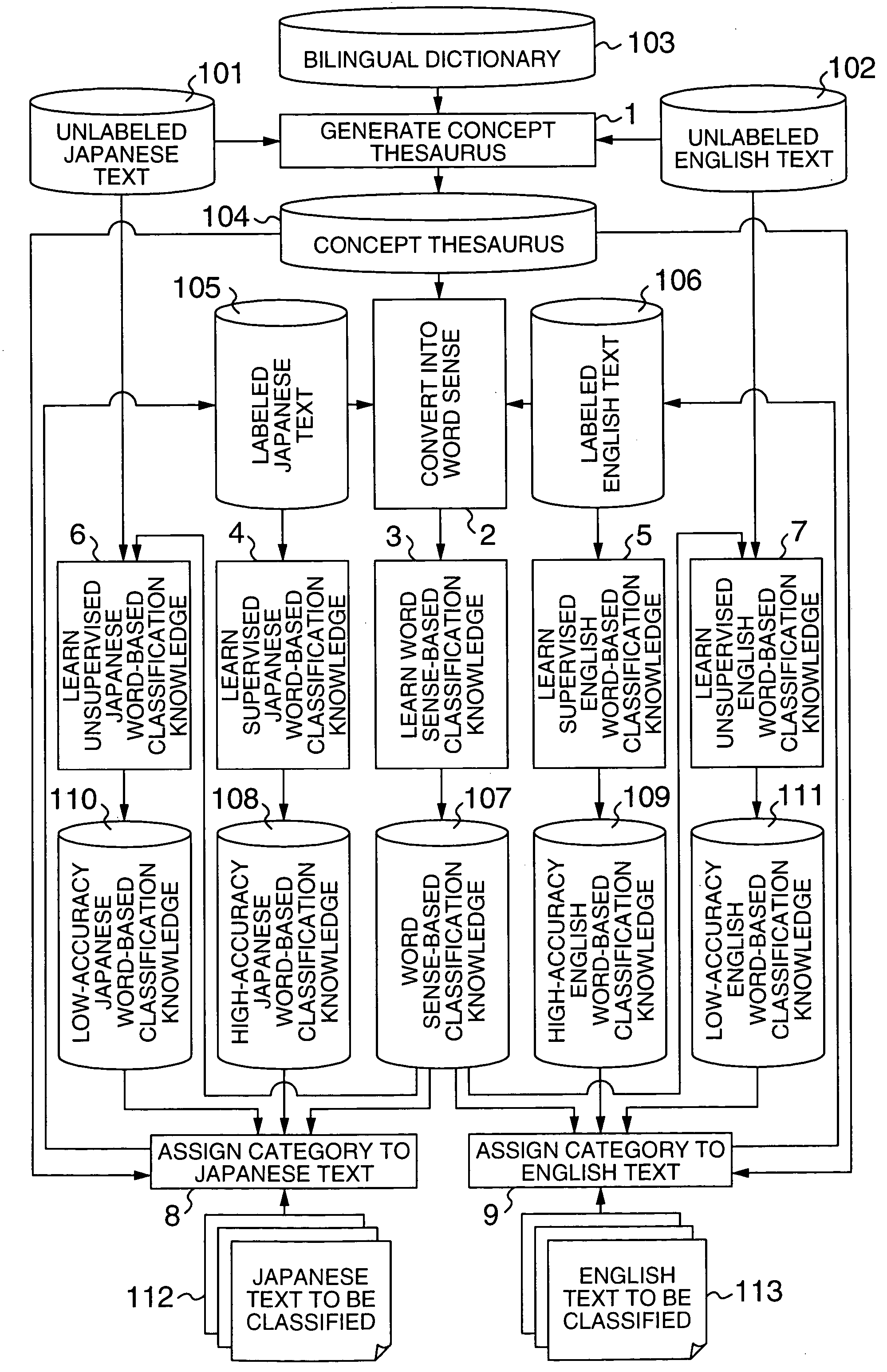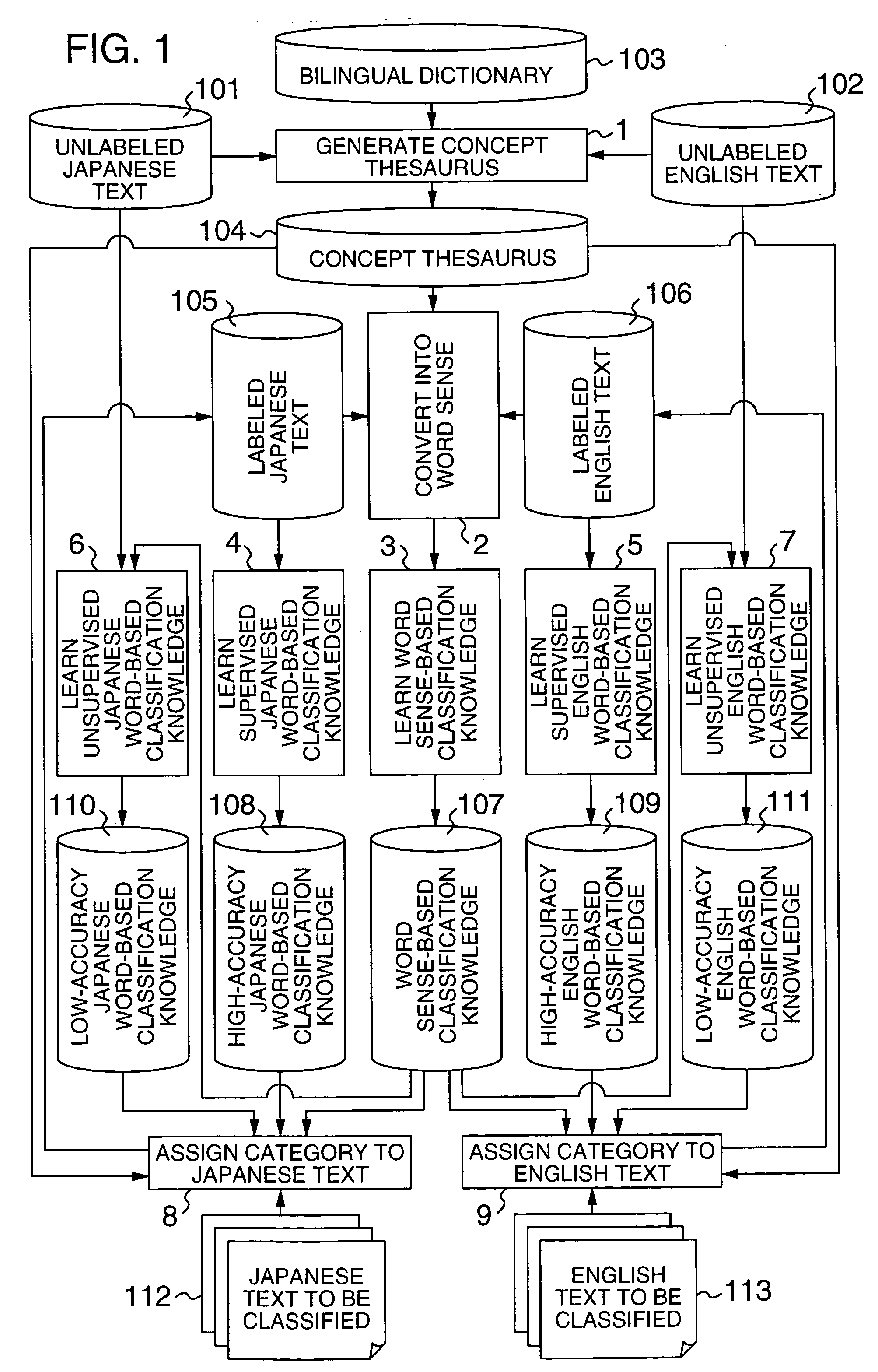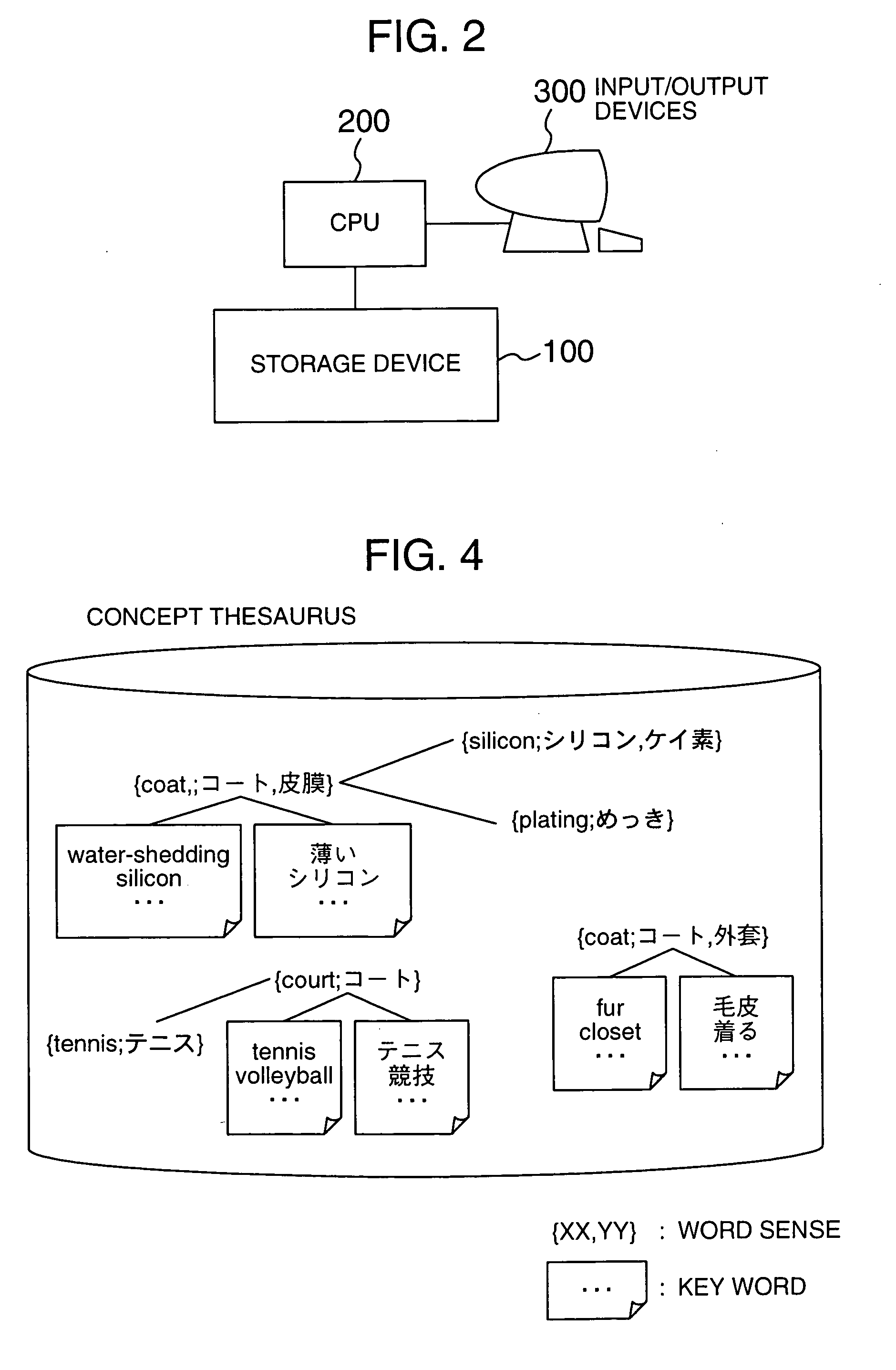Cross lingual text classification apparatus and method
- Summary
- Abstract
- Description
- Claims
- Application Information
AI Technical Summary
Benefits of technology
Problems solved by technology
Method used
Image
Examples
Embodiment Construction
In the following, one embodiment of the present invention will be described with reference to the accompanying drawings.
FIG. 1 illustrates a block diagram of a bilingual text classification support system according to the present invention. The bilingual text classification support system according to the present invention comprises a group of programs which learn a classification knowledge for assigning a category to a text, and a group of programs which uses the learned classification knowledge to assign a category to a text. While a text classification support system which supports two languages, i.e., Japanese and English is given herein as an example for purposes of description, the languages processed by the system are not limited to these two languages. In addition, text classification, learning, and the like can be carried out in a similar approach as well when the system supports three or more languages.
The group of programs which learn the classification knowledge incl...
PUM
 Login to View More
Login to View More Abstract
Description
Claims
Application Information
 Login to View More
Login to View More - R&D
- Intellectual Property
- Life Sciences
- Materials
- Tech Scout
- Unparalleled Data Quality
- Higher Quality Content
- 60% Fewer Hallucinations
Browse by: Latest US Patents, China's latest patents, Technical Efficacy Thesaurus, Application Domain, Technology Topic, Popular Technical Reports.
© 2025 PatSnap. All rights reserved.Legal|Privacy policy|Modern Slavery Act Transparency Statement|Sitemap|About US| Contact US: help@patsnap.com



